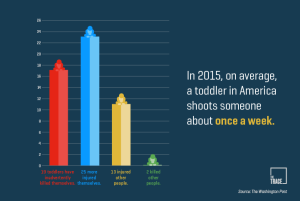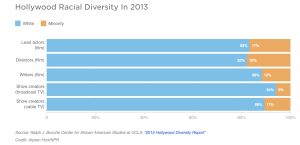Fear. Panic. Anger. Terrorism is a word all too familiar to Americans and people around the world today. Terrorism’s goal is in its name. Terror. Aiming to strike fear into the minds of innocent people everywhere. But terrorism did not used to be something that happened in America. America was impenetrable, or so everyone thought. On that crystal clear Tuesday morning in 2001 life was good, right up until just before 9am, when the whole world changed. Nothing would ever be the same, cue fortress America. With attacks continuing to happen in the US, people look to the government to act. As the American public has seen over the recent years the government has been trying to combat this threat with tighter security measures in public places and stricter guns laws. Military officers and politicians agree that domestic terrorism is a pertinent threat and the only way to combat this threat is by attacking the source, preventing groups like ISIS from recruiting Americans to commit these vicious acts.
The first step, which is in the process of being taken, is politicians need to accept is that domestic terrorism is the biggest threat to national security, not climate change. Yes, looking at you Bernie Sanders. According to Michael Morell, a military intelligence officer, ISIS poses a major threat to the US both domestically and abroad. But for all intents and purposes, let’s just focus on the domestic side.
In Morell’s article, titled, ISIS Will Strike America, he gives a small glimpse into how real this threat is when he writes “The FBI has over 900 open investigations into homegrown extremists, the vast majority radicalize by ISIS, and a large number of those investigations relate to individuals who may be plotting here” (Morell 2). The most striking piece of information from this quotation is the 900 open investigations. Now, granted, 900 is a very small number in comparison to the number of open murder investigations the FBI has, 200,000 since 1980, but this number is still significant (NPR.com).
The reason this number is so significant is because terrorist attacks, especially in the US are much more rare than murders. The fact that there are 900 open investigations means that there are a lot of people out there intending to do harm on other Americans and not on a small scale either.
Terrorists look to inflict as much damage as possible to as many people as possible when they carry out their attacks. So, while it may seem like there are way more open murder investigations, the level of urgency does not compare to that of the open terrorist investigations. In terms of countering these domestic terror attacks, the government needs to display more urgency by putting plans in motion.
According to Admiral James Stavridis, the only way to combat this threat is to make changes across multiple areas. Admiral Stavridis has an eight-step plan that he claims will defeat ISIS. Whether or not this is true is up for debate, but it is a good place to start. Some of the biggest parts of his plan consist of increasing intelligence across defense departments. Another portion of his plan suggests that the US needs to incorporate a cyber element into this fight, in order to combat ISIS’s ability to recruit domestically, disrupt operational control, and prevent them from more monetary gains from their criminal activity. This part of Admiral Stavirdis’s plan is in motion, with the Obama administration creating a joint task force with the NSA and Department of Homeland Security.
Recently, the Obama administration has set up a joint task force between the NSA, the National Security Agency, and the Department of Homeland Security. This task force’s goal is to try and prevent ISIS members from recruiting within the US and also trying to locate where these recruiters are located in order to apprehend them. In addition, the government has been adamant recently about overhauling America’s gun laws in an attempt to ultimately keep guns out of the wrong hands.
Some of these new gun laws are as follows. In 2016, the FBI is going to increase background checks on everyone attempting to purchase a firearm. They hope to accomplish this by employing 230 more examiners in order to provide background checks around the clock (ATF). Also, the Obama administration is proposing a $500 million investment to increase access for mental health care. Now, while these new laws may seem like a step in the right direction, that’s all they are, a step.
Ultimately, only time will tell if any plans the US is putting forth to combat ISIS in America will work. Creating stricter gun laws and assembling task forces is a good place to start, but there are always loopholes, for example illegal firearms. This group has found these loopholes in the past, who is to say they will not find them again in the future?
Aside from whether or not ISIS will find a loophole to continue to conduct attacks on America, there is another issue, recruitment. Now, if you are like me, you are going to ask yourself one simple question; who in their right mind is joining ISIS as an American? Luckily, or maybe not so much, there is an answer.
One example of Americans being drawn to ISIS’s ideologies is Elton Simpson. In Garland, TX, May 2015 Elton Simpson opened fire at an event celebrating local cartoonists. Shortly before the assault, Simpson declared allegiance to ISIS on Twitter. Simpson is one of 62 known Americans who have declared such an atrocity within the US. 62 is a small number in comparison to the number who have traveled to Iraq and Syria to fight for ISIS, which according to a discussion on NRP in September 2015, that number is around 250 Americans, however, that is still more about one person per state.
Does 62 still feel like a small number to you? Well take this into account. James Comey, the current head of the Federal Bureau of Investigation said during an interview in July 2015 “ISIS has influenced a significant amount of troubled Americans through social media… urging Muslims who are unable to travel to the Middle East to ‘kill where you are’”(Varandani 1). This quotation from the current F.B.I head is what is going to put fear into the minds of all Americans. 62 probably feels like a huge number now, right?
According to psychologist Arie Kruglanski, people who join the Islamic State and similar groups are people who view the world with sharp definition. These terrorist groups view the world in the same manner. No gray area, everything is coherent. In addition, these extremist groups also allow people to become part of a large, unique group. Kruglanski says that these beliefs are attractive to those who are looking for a sense of identity (Mooney 2). ISIS knows this and therefore is able to recruit vulnerable people within the US simply because these people are trying to find where they belong.
ISIS recruiters know there are people in the US who are vulnerable and easily manipulated. For example, ISIS recruiters often put movie-trailer style videos on YouTube, glorifying their heinous practices and beliefs. To someone who may not know any better, the videos can be very appealing.
This is exactly where the NSA’s task force is needed. Being able to prevent ISIS from recruiting Americans via social media will be a step in the right direction. Also, the previously mentioned information from psychologists like Arie Kruglanski can help to build a psychological profile for people who join extremist groups.
As previously stated in this article however, there is no one plan to prevent and even end domestic terrorism. Colin Clarke, a RAND Corporation political scientist sums it up best when he says “’there is no single key or silver bullet to combating Islamic extremism, which is what makes combating it so difficult. There is no single pathway to radicalization.’”
The fist thing that American people and politicians need to accept is that domestic terrorism will always exist. There will always be extremist groups in America and around the world who are looking to bring harm to others for simple reasons such as they do not like someone else’s culture or their government and therefore feel the need to attack their way of life.
While these new policies involving guns laws and task forces are a step in the right direction, that is all they are, a step. Only time will tell whether or not these policies actually do anything to help law enforcement both find potential terrorists before they strike and make it harder for terrorists to carry out their attacks. The biggest impact these policies have on the public is it gives everyone feelings of security. That in itself is part of this battle as well. If Americans do not feel that there is a constant threat against them every time they leave their homes or go to a crowded area, then that is a victory in itself.
No matter what the government does to prevent attacks, they will still happen. There will always be hate. As President Obama leaves office in the next few months Americans will have to wait and see how they try to combat this threat. One thing is for certain though, these extremist groups like ISIS will never be able to dictate the way Americans live their lives. The American population as a whole will not accept defeat from ISIS or any group like it and will never stop in its quest to combat this threat.
work cited:
Aguiar, Peter. “Here’s How the U.S. Moves Forward after San Bernardino Terror Attack:.” ProQuest. N.p., 29 Dec. 2015. Web.
Bergen, Peter. “Who Are ISIS American Recruits?” CNN 6 May 2015: n. pag. Web.
Crabtree, Susan. “White House Huddles with Tech Firms on Counterterrorism.” ProQuest. N.p., 8 Jan. 2016. Web.
Kruglanski, Arie. “Here Are the Psychological Reasons Why an American Might Join ISIS.” Mother Jones 29 Aug. 2014: 1-3. Web.
Miller. “Obama Administration Plans Shake-up in Propaganda War against IS.” ProQuest. N.p., n.d. Web.
Morell, Michael. “ISIS Will Strike America.” Time Magazine. N.p., n.d. Web.
“Report: 250 Americans Have Gone To Syria And Iraq To Fight.” Interview by Steven Inskeep. NPR.com. NPR, n.d. Web.
Varandani, Suman. “ISIS Influence On Troubled Americans Bigger Threat Than External Attack By Al Qaeda: FBI Head James Comey.”International Business Times 23 July 2015: n. pag. Web.
Image: http://www.nycrimecommission.org/images/domestic-terrorism-chart.gif
Gun Image: https://orgs.law.harvard.edu/acs/files/2015/02/gun-control-l-01.jpg
Unit 3 Reflection:
- I think that my title does grab the reader, because when you first look at it, it doesn’t give the impression of being an article about domestic terrorism. I tried to be a little clever with the title. One thing that gave me the idea for the title was during my research authors kept talking about how these domestic terrorists could really be anyone, so I tried to incorporate that into my title. The subtitle however does. The subtitle gives the reader an idea about what exactly they’ll be reading about in my article.
- The introduction is intended to grab the reader’s attention from the first three words. I chose to just use three words, instead of an opening sentence to grab their attention, also trying to induce a sense of urgency in the reader. The problem is located towards the end, where I write about where the root of the domestic terror threat lies, and that is in preventing ISIS from recruiting Americans. Also, in order to lead the reader in I mentioned how America has changed in the years since 9/11, what it was like before and after and how America will never be the same.
- I tried to offer up an idea that I could really dive into. My idea being how to prevent recruitment. I chose this because there were several avenues of approach that I saw. One idea being how is ISIS recruiting? Another being what kind of person joins ISIS from America and why do they join? These topics allowed me to look into recent events in the US and how law enforcement responded and also how the government responded.
- I tried to keep my thoughts organized in an order that made the most sense and also flowed well. The most helpful thing I thought was when we scrambled our drafts in class. This is because by having someone else put it back together in an order they thought made the most sense really helped me see how an audience would read this piece. I also tried to keep the paragraphs are short as I could, since this is a magazine article, but at the same time not cutting them short of any information I thought needed to be included.
- NY Times magazine article readers are definitely a more educated group overall than people reading Huffington Post articles, so they are more likely to have more of a background or at least some prior knowledge of my topic. This being the case, the biggest thing I needed to make sure I did was find and include accredited sources, sources people have heard of and trust. But finding these sources was only half the battle. I needed to make sure that my writing was strong and that I had a strong argument present. In my article I tried to address key points about this issue while also focusing most of my argument on an area that most people may not think about, recruitment.
- I think I conveyed my stance well. Making it known that ISIS recruiting Americans is an issue and needs to be stopped. I also tried to convey that while this issue may not get a lot of attention it still is a big issue. I found statistics from NPR and newspapers to back up this claim as well, trusted sources that the reader knows.
- For my research I tried to find as many quality sources as I could, knowing I probably wouldn’t use all of them, but I wanted to have a solid base to work with and choose the best ones. I also chose to include an image to show how domestic terror attacks have increased over the years. In addition, I also included an image that was symbolic of gun laws. It was a handgun made of words that represented the pros and cons of gun laws.
- I incorporated a primary source with a chart that showed the increase of domestic terror attacks over the years. I included this to show the reader that this is truly an issue. In addition, I included many secondary sources that both introduced new topics and build off of other topics. One example of this is when I broke down ISIS’s ability to recruit within the US. I chose to explain how they do this and also the psychological profile of someone from American who would join ISIS.
- In the beginning I tried to create sense of urgency in the reader by starting out with just three words instead of sentences. Also, I tried to use pathos by mentioning 9/11, because I knew that would strike a nerve with people, making them think back to that awful day. Overall I think that my use of sources helped to develop my argument and help make a strong point.
- The visuals I used I chose because I wanted to give perspective. I don’t think that people realize how big of an issue domestic terrorism is and the image of the graph I hope will help convey that point. The other image I used was of a handgun made out of words that were the pros ad cons of gun control. Gun control is a hot topic today in the US, so I needed to include it in my article and I thought that this picture perfectly conveyed the two side of the argument.
- When I first started writing the biggest challenge for me was figuring out how to start. I had a lot of information from my research, so I needed to figure out a way to present it in a manner that made sense and flowed. The one thing that helped me the most with my organization, as I said earlier was the scrambled draft. This is because I was able to see how someone else thought I should order my paragraphs, which ended up being relatively different than how I had originally ordered them and I liked the new order a lot better, it was much more organized.
- I used hyperlinks to the articles that I found to be the most interesting and that I thought readers would benefit too from reading. I think that the articles give another perspective, for example, Michael Morell’s article, he was a military intelligence officer, so I think reading about how he views the situation from the point of view of someone who has dealt with these threats first hand is very beneficial for readers. I also hyperlinked the URL for the interview with psychologist Arie Kruglanski, because I that article went into great depth that I honestly just didn’t have room to go into in my article, given the word count limit.
- I made sure that all the grammar in my article was perfect. Also, I edited t=it to make sure, one that I didn’t have any run on sentences where I was just going on and on and giving the reader too much information at once. Second, I wanted to make sure that none of my paragraphs were too long, since this is a magazine article, the paragraphs need to be as short and concise as possible without losing any details along the way.



































